testimonial from Germany
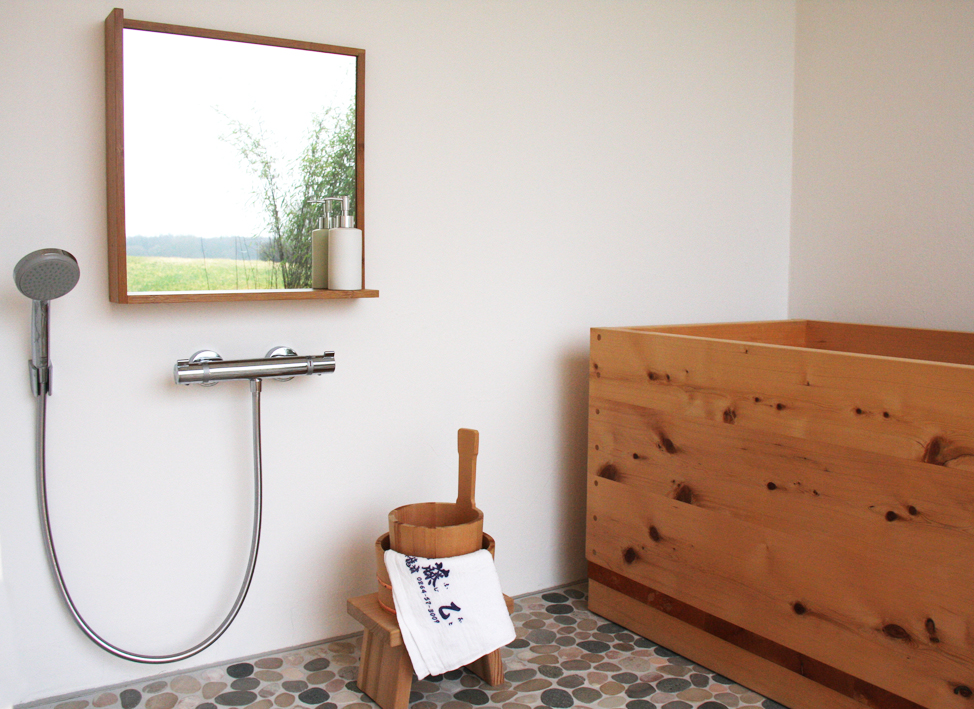
Dear Iacopo
Of course you can use the picture, I have added a few others. It’s difficult to take pictures because of the confined space. But one can see the puristic, minimalistic design which pervades the whole house. You will also recognize the details, like the pebbles of the river Rhine outside which mirror the pebbles of the floor of the bath (and entrance) only with a smooth surface; or the windows without windowsills, so that the window reveals become the frame for the picture landscape.
The smell of the Hinoki bath is still overwhelming! If not in use I cover it with a light plastic foil and put a small bucket with some water inside to keep the smell. And when I lift it off it, I am at once somewhere else with my thoughts. It’s just great, the best decision ever. Even my visitors notice the smell as soon as entering the house.
Beside lots of bamboo, 3 japanese cherry trees I planted a Ginkgo. The leaves are down by now but some are captured in the Sumi-e I have attached
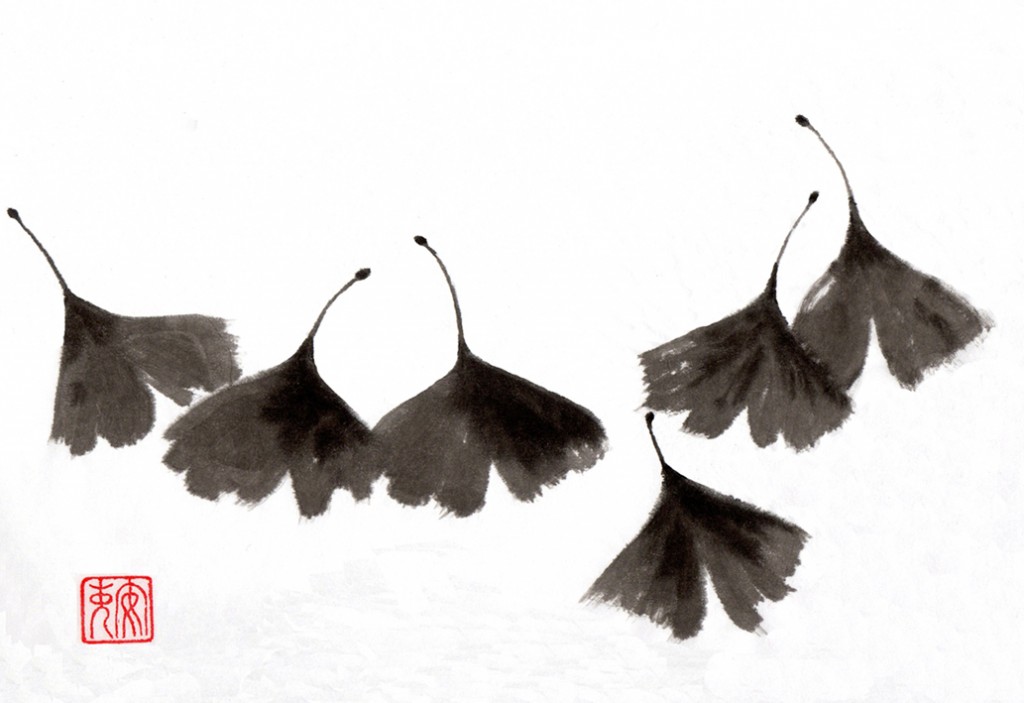
I wish you all the best for all your extensive and prudent efforts, especially in rescuing most valuable buildings. I have enormous respect for your engagements.
Anke – Germany
(other photos below)
 tub from front
tub from front
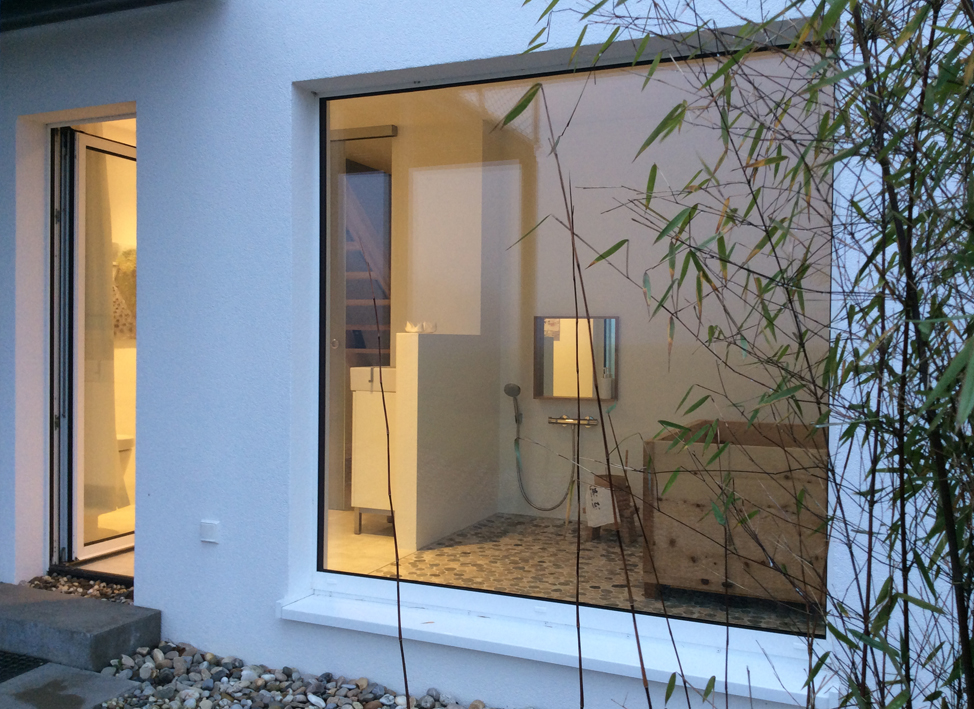 tub from the garden
tub from the garden
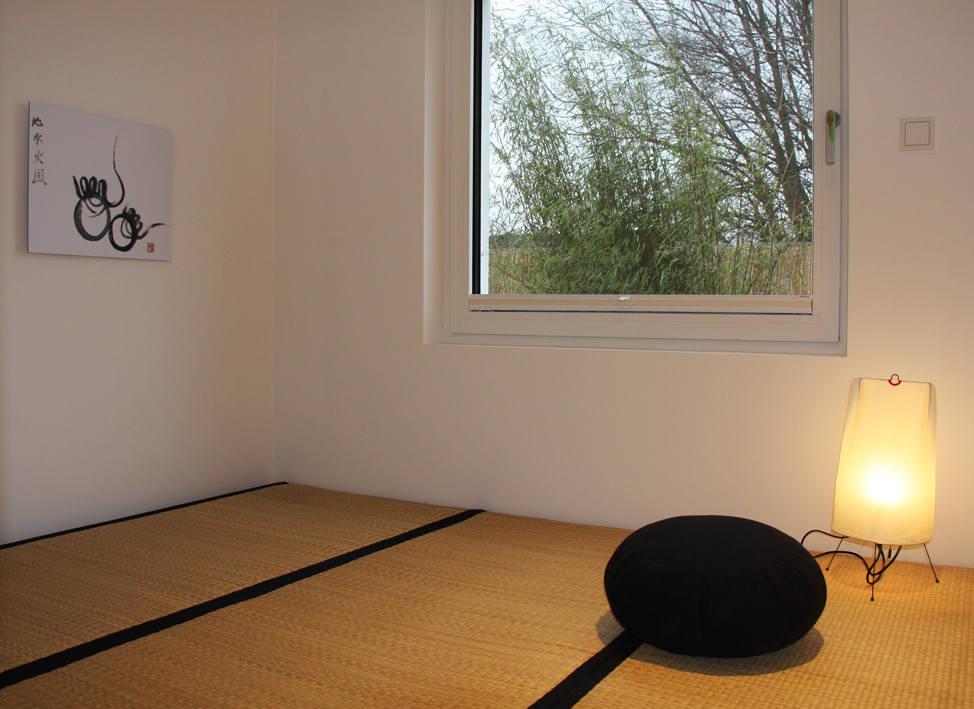 tatami room
tatami room
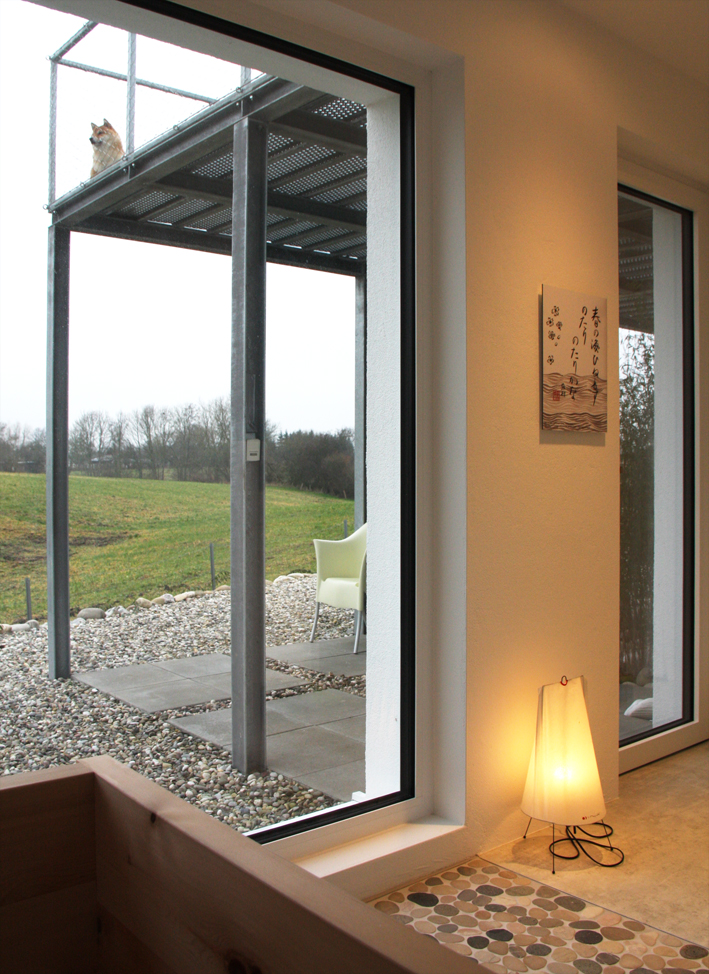 pebbles inside and outside…
pebbles inside and outside…
matthieu darcourt
2018年11月18日 at 9:45 AMHello
My colleagues we have been working with you for a cabinet for the Loft Ginza project, and seem very happy about your work !
Now I am working on a private housing project in the mountains of Utah in the US.
Our clients love japanese Ofuro and are requiring one. We do have some concerns for the design and the maintenance though.
1. It is a ski house, so our client will only go there on holidays, or on a week end, but sometimes the house might be empty for 2 months, is that an issue for the wood ? Or a the bucket of water inside the bathtub could be enough ?
2. Your details show a minimum of 20 mm between the bathtub and the walls, how about cleaning the outside of the tub ? You don’t need to clean it ? It won’t get moldy ? The Hiba-oil should only be applied inside ?
3. In terms of usage, should the client keep the water during all their holidays and drain it only at the end ? Or drain it everyday ? Probably only a couple would use it.
4. The trully traditional bathtub is perfectly square, am I correct ? It seems that you build more rectangle ones, is there any reason for that ?
Thank you, and please give us a call if you want more information and ask for Matthieu
I am looking forward to hearing from you.
matthieu
hinoki
2018年11月19日 at 6:50 AMDear Matthieu,
Thank you for your kind comment and for your interest in our ofuro as well
Please note:
1) Utah is a very dry climate and 2 months without use is definitely a high risk.
You might want to keep 2 inches of water inside at all times and cover the tub to be on the safe side.
2) you would only shower inside the gap but no scrubbing is required. An alternative is to seal the tub against the wall. On the other hand in this case you will not be able anymore to move the tub for maintenance/cleaning of the wall behind.
3) They can keep the water and recirculate it even without a sanitation system if it is only for 2 days.
4) The original way of bathing was in the natural hot spring lakes and ponds. This developed into communal baths in the cities (sento). For individual use, in the late Edo period, 2 woodworking techniques were adapted for making tubs:
– technique used for making buckets and barrels was used to make round and ingot shape tubs (kadomaru)
– technique used for ship building was used to make box type tubs (rectangular and square)
Rectangular tubs are more common for use for 1-2 people.
Square tubs are efficient for 4-6 people.
If you give me the approximate sizes you are looking at – or if you send me a plan of your bathroom space, I can make a proposal for your review.
We can start from there for fine tuning it or to check alternative options.
We are looking forward to working with you and remain at you disposal for any question/problem.
With Best regards,
Bartok design Japan Co.
Manager: Iacopo Torrini
—————————-
e-mail: japan@bartokdesign.com
tel: +81-78-262-6811
fax: +81-78-262-7151
cell.: +81-90-8205-1200
—————————-